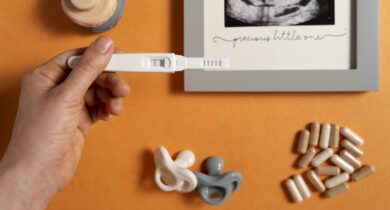Improvements achieved in an oocyte donation program over 10 years period: sequential increase in implantation and pregnancy rates and decrease in high-order multiple pregnancies.
Authors: Erdal Budak, Nicolas Garrido, Sérgio Reis-Soares, Marco Melo, Marcos Meseguer, Antonio Pellicer, José Remohí
(Fertility and Sterility 2007; 88: 342-349)
Objective: To compare cycle outcome parameters and cumulative pregnancy rates (CPR) in oocyte donation cycles over a period of 10 years.
Design: Retrospective study from a computer database. Oocyte donation cycles with embryo transfer were included in the analyses.
Setting: In vitro fertilization using donor oocytes at Instituto Valenciano de Infertilidad, University of Valencia, Spain.
Patients: Oocyte recipients undergoing embryo transfer from September, 1995 through September 30, 2005. Interventions: Controlled ovarian stimulation (COH) and oocyte retrieval in donors. Embryo transfer to recipients following endometrial preparation with exogenous estrogens.
Main Outcome Measurements: Cycle outcome parameters including implantation, pregnancy, clinical and ongoing pregnancy, miscarriage, ectopic pregnancy, twin and high order multiple pregnancy rates, as well as cumulative pregnancy rates were calculated and compared in relation to infertility indication, age group and origin of sperm utilized.
Results: Overall PR, IR, clinical PR and MR per embryo transfer performed were 54.9%, 27%, 50.3% and 19%, respectively. Ongoing pregnancy rate per transfer was 40.2%, while twin and high order multiple PR were 39% and 6%, respectively. Mean number of embryos transferred reduced from 3.6±0.8 to 1.9±0.3, between periods 1995-1998 and 2004-2005, respectively. Implantation rate improved from 16.7% to 38.3%, and ongoing PR improved from 31% to 44.3% in the same time periods. Overall CPR was calculated as 96.5% after five embryo transfers. Cumulative pregnancy rates did not differ significantly among different indications for oocyte donation and age groups. Concerning the origin and quality of semen utilized, CPR did not differ significantly among ejaculated sperm, testicular sperm or use of semen from the sperm bank. Conclusions: Oocyte donation offers high pregnancy rates to infertile women who require this treatment alternative. Over a period of 10 years, significant improvement in cycle outcome parameters such as IR and ongoing PR were achieved. Over the years, we have reduced the number of embryos transferred and achieved a significant decrease in high order pregnancy rates without a compromise in cumulative pregnancy rate. Similar CPR were observed regardless of recipient age, indication for oocyte donation, or origin of sperm
utilized for oocyte insemination.
KeyWords: Oocyte donation, implantation rate, pregnancy rate, cumulative pregnancy rate, indications.




 Seg à Sex, de 08:00 às 18:00
Seg à Sex, de 08:00 às 18:00

